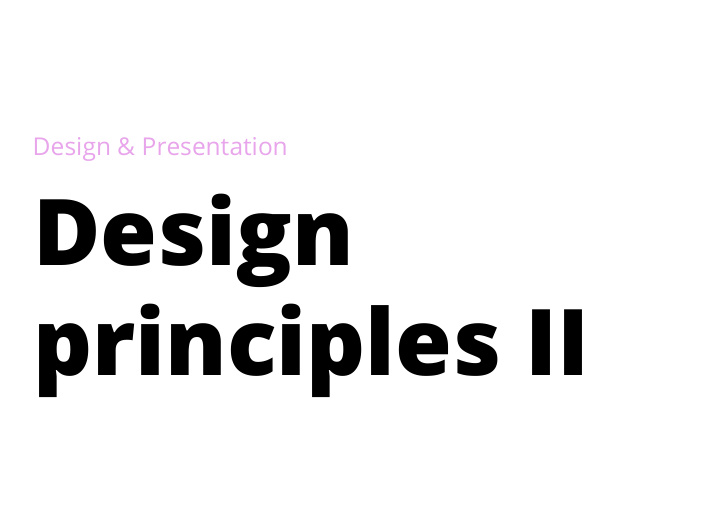



Design & Presentation Design principles II
1. Typography 2. Layout 3. Color
Typography Fonts and how to use them
Via Type On Screen
Via Type On Screen
Type classi�cation
Via The Non-Designer's Design Book
Via The Non-Designer's Design Book
Via The Non-Designer's Design Book
Via The Non-Designer's Design Book
Via The Non-Designer's Design Book
Type families
Via Thinking With Type
So you want to emphasize? Use italics to di�erentiate Or weighting to make it bold Maybe even underline But pick one! Avoid sending mixed signals!!
Heads & bodies
Via The New York Times
Via The Non-Designer's Design Book
This is my headline My body text is the same font, but in a very di�erent weight and size to help di�erentiate it. Looks nice and clean, wouldn't you say?
This is my other headline But we can also have our body text be from a di�erent type family than our headers to create clear visual distinctions between content types.
Mixing typefaces
Via Thinking With Type
Guiding principle: Typographic contrast
Guiding principle: Typographic contrast
Via The Non-Designer's Design Book
Via The Non-Designer's Design Book
Via The Non-Designer's Design Book
Via The Non-Designer's Design Book
Layout Making the grid work for you
Single-column Multi-column Modular
Via Thinking With Type Guiding principle: Organizing space
Via Leo Tolstoy
Via Observe Magazine
Via The New York Times
Via Layout Workbook
Layout tip: Don't let your text run too wide – or too narrow (A.K.A. The Goldilocks principle of line-length)
Too narrow A sentence that is in a column that's too narrow becomes hard to read, don't you think?
Too wide A sentence that's in a column that's too wide just keeps going and going and loses readers' attention. (It's hard work to read this!)
Just right A line should hold 45-75 characters (counting both letters and spaces). 66 characters is ideal! Online, optimal width varies by font-size.
Color Using color e�ectively in design
The color wheel
Primary Secondary Tertiary
Color relationships
1. Complementary Via The Non-Designer's Design Book
2. Analogous Via The Non-Designer's Design Book
Hue v. Shade v. Tint Via The Non-Designer's Design Book
Hue = Pure color
Shade = Add black
Tint = Add white
CMYK v. RGB CMYK = Cyan, Magenta, Yellow, Key (black) • Works like paint (additive) • Used for print RGB = Red, Green, Blue • Works like light (subtractive) • Used for the web
Choosing colors Via wesandersonpalettes.tumblr.com
Tools Adobe Color CC Color Brewer
Recommend
More recommend